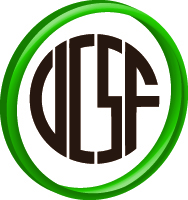Team:UCSF
From 2009.igem.org
| Line 37: | Line 37: | ||
Through our manipulations, we hope to better understand how these | Through our manipulations, we hope to better understand how these | ||
systems work, and eventually to build or reprogram cells that can | systems work, and eventually to build or reprogram cells that can | ||
| - | perform useful tasks. Imagine, for | + | perform useful tasks. Imagine, for exProxy-Connection: keep-alive |
| + | Cache-Control: max-age=0 | ||
| + | |||
| + | ple, therapeutic nanorobots that | ||
could home to a directed site in the body and execute complex, | could home to a directed site in the body and execute complex, | ||
user-defined functions (e.g., kill tumors, deliver drugs, guide stem | user-defined functions (e.g., kill tumors, deliver drugs, guide stem | ||
| Line 61: | Line 64: | ||
!align="center"|[[Team:UCSF/Project|The Project]] | !align="center"|[[Team:UCSF/Project|The Project]] | ||
!align="center"|[[Team:UCSF/Parts|Parts Submitted to the Registry]] | !align="center"|[[Team:UCSF/Parts|Parts Submitted to the Registry]] | ||
| - | !align="center"|[[Team:UCSF/ | + | !align="center"|[[Team:UCSF/Our summer experience|Our summer experience]] |
!align="center"|[[Team:UCSF/Notebook|Notebook]] | !align="center"|[[Team:UCSF/Notebook|Notebook]] | ||
|} | |} | ||
(''Or you can choose different headings. But you must have a team page, a project page, and a notebook page.'') | (''Or you can choose different headings. But you must have a team page, a project page, and a notebook page.'') | ||
Revision as of 20:52, 6 October 2009
| Engineering the Movement of Cellular Robots
Some eukaryotic cells, such as white blood cells, have the amazing ability to sense specific external chemical signals, and move toward those signals. This behavior, known as chemotaxis, is a fundamental biological process crucial to such diverse functions as development, wound healing and immune response. Our project focuses on using a synthetic biology approach to manipulate signaling pathways that mediate chemotaxis in two model organisms: HL-60 (neutrophil-like) cells and the slime mold, Dictyostelium discoideum. We are attempting to reprogram the movements that the cells undergo by altering the guidance and movement machinery of these cells in a modular way. For example, can we make cells move faster? Slower? Can we steer them to migrate toward new signals? Through our manipulations, we hope to better understand how these systems work, and eventually to build or reprogram cells that can perform useful tasks. Imagine, for exProxy-Connection: keep-alive Cache-Control: max-age=0 ple, therapeutic nanorobots that could home to a directed site in the body and execute complex, user-defined functions (e.g., kill tumors, deliver drugs, guide stem cell migration and differentiation). Alternatively, imagine bioremediation nanorobots that could find and retrieve toxic substances. Such cellular robots could be revolutionary biotechnological tools. | |
|
Tell us more about your project. Give us background. Use this is the abstract of your project. Be descriptive but concise (1-2 paragraphs) | |
| Team Example |
| Home | The Team | The Project | Parts Submitted to the Registry | Our summer experience | Notebook |
|---|
(Or you can choose different headings. But you must have a team page, a project page, and a notebook page.)
 "
"


